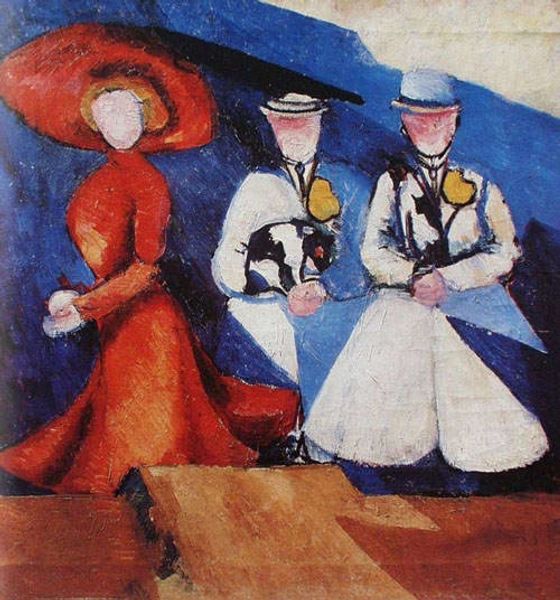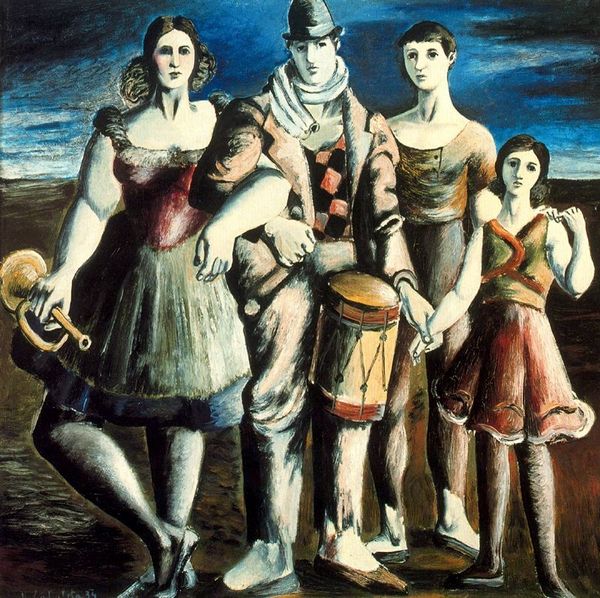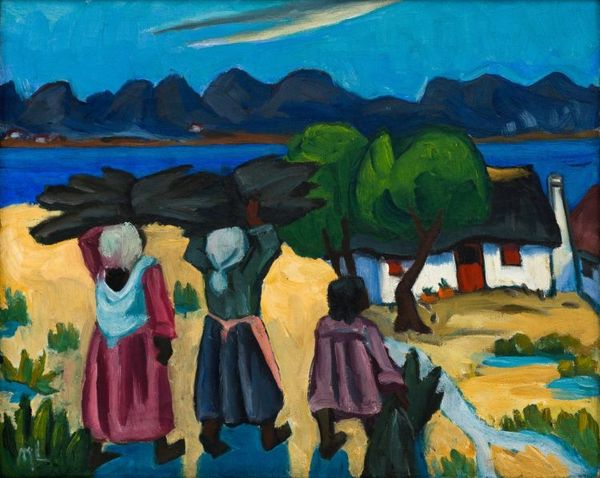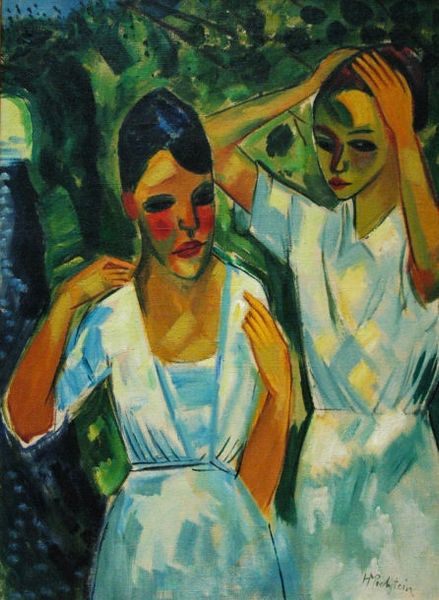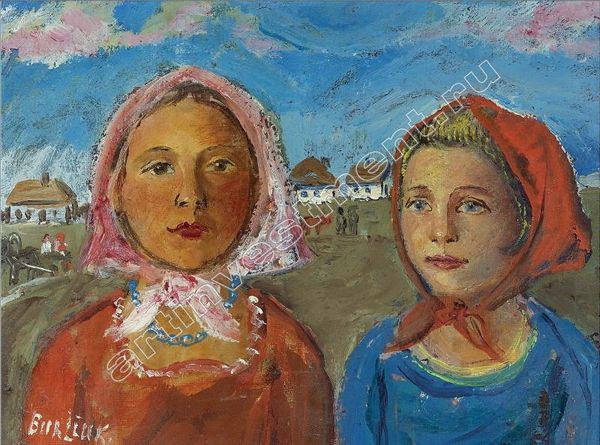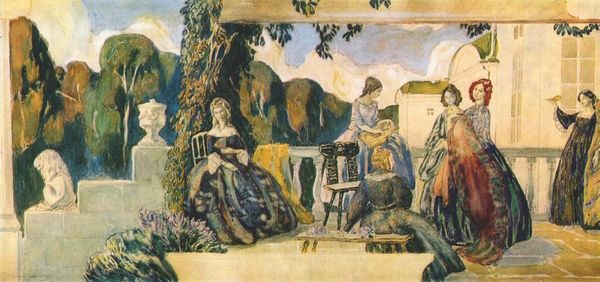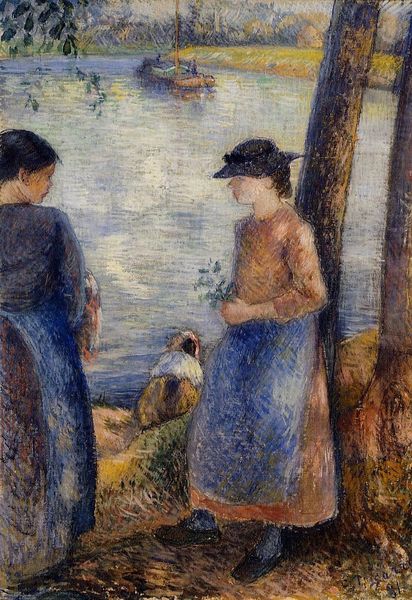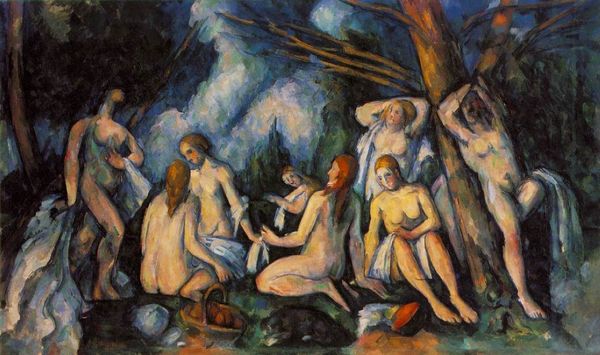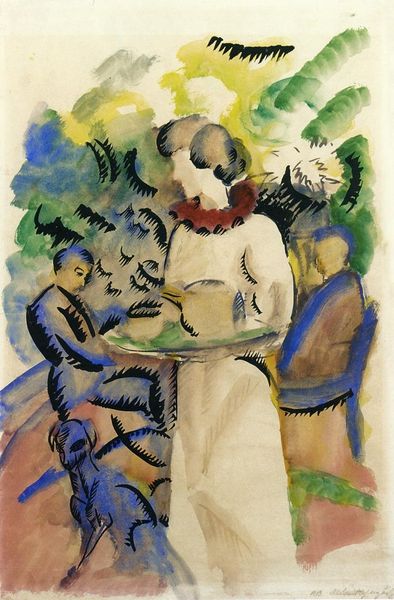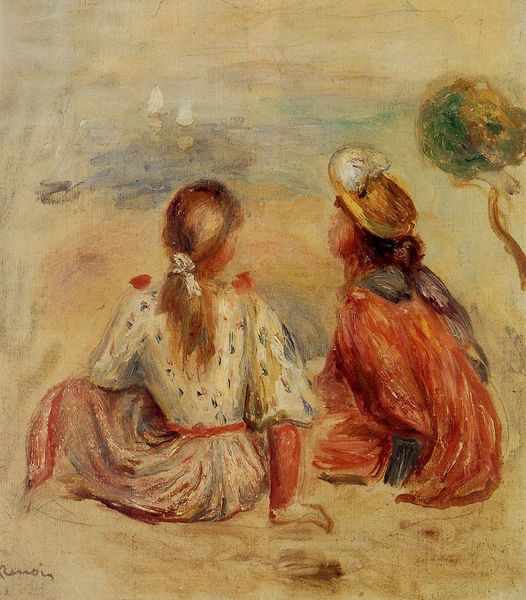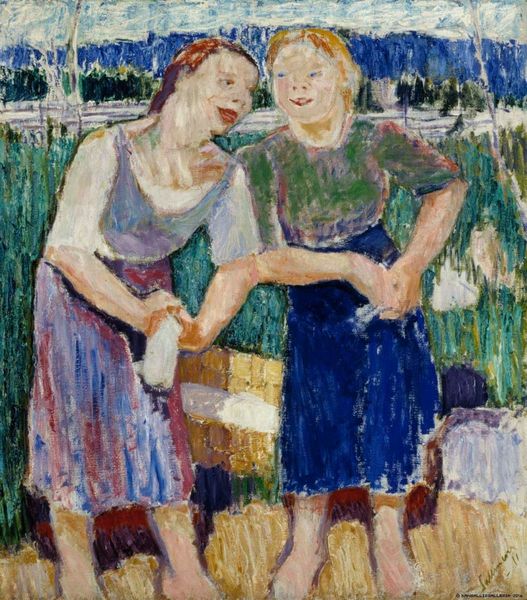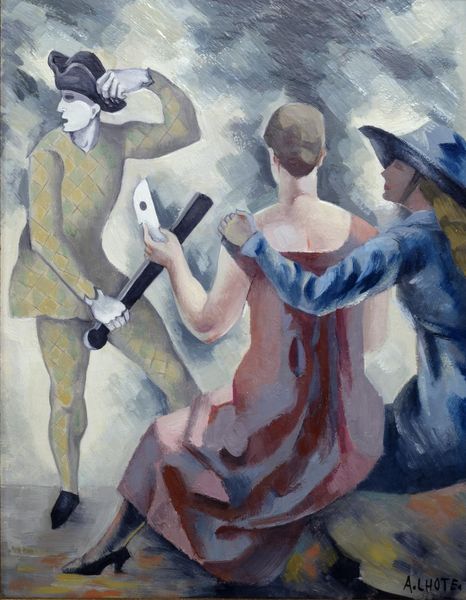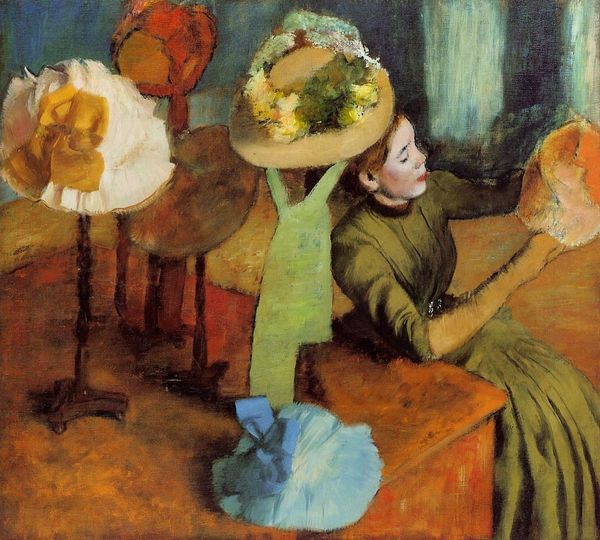
oil-paint
#
portrait
#
oil-paint
#
figuration
#
oil painting
#
neo expressionist
#
geometric
#
group-portraits
#
expressionism
#
portrait art
Dimensions: 77 x 67 cm
Copyright: Public domain US
Curator: Hello! Editor: Hi! So, this is "The Three Dutch Women," painted by Picasso in 1905. It's an oil painting, and the mood is… intense. They’re all very close, but that one on the left looks angry. What do you see in this piece? Curator: It’s crucial to remember Picasso painted this in Gósol, a small village in the Pyrenees. The work reveals the artist’s entanglement with ideas about the feminine and rural life, which were dominant in early 20th century Catalan society. Does it strike you as particularly empathetic? Editor: Not really. I mean, there's something…stark about it. The figures are geometric almost. Curator: Exactly! It’s also important to see it in light of his earlier Blue Period and subsequent move towards Cubism. Consider how gender roles and regional identity play out, the way those figures embody idealized representations of womanhood. Notice the harsh outlines and simplified forms. How does that connect with similar depictions from the period, and perhaps, challenge them? Editor: Hmmm… I hadn't really thought of it that way. So, it’s like, Picasso is maybe grappling with representing woman in a traditional setting versus something more modern? Curator: Precisely. He’s exploring and challenging the existing notions around gender and place. Art does not exist in a vacuum. Editor: I’m now thinking about the expressions of the woman and their inter-personal relationship…I think I had only been observing the geometrical element until now. Curator: By viewing artwork through socio-historical lens it provides greater context. Editor: Thanks for pointing this out! It helps broaden the perspectives through which I see the piece. Curator: It has been a pleasure!
Comments
No comments
Be the first to comment and join the conversation on the ultimate creative platform.
